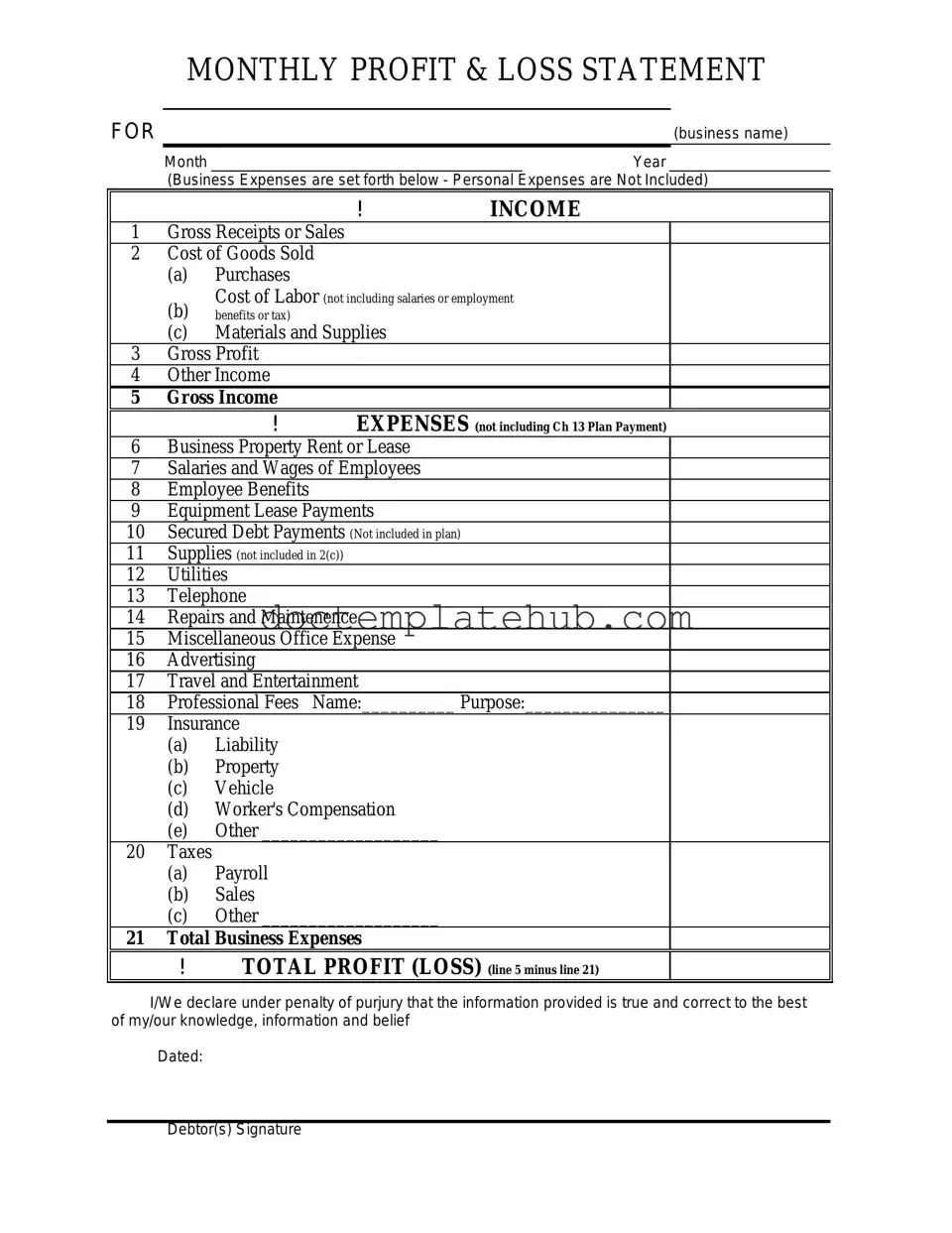What is a Profit and Loss form?
A Profit and Loss form, often referred to as an income statement, is a financial document that summarizes the revenues, costs, and expenses incurred during a specific period. This form provides a clear picture of a business's profitability, indicating whether it has made a profit or incurred a loss over that time frame.
Why is the Profit and Loss form important?
The Profit and Loss form is crucial for several reasons. It helps business owners understand their financial health, assess operational efficiency, and make informed decisions regarding budgeting and forecasting. Additionally, this form is essential for investors and stakeholders, as it provides insight into the company's performance and potential for growth.
What information is included in a Profit and Loss form?
A typical Profit and Loss form includes various sections: revenues or sales, cost of goods sold (COGS), gross profit, operating expenses, and net profit or loss. Each section provides a detailed breakdown of income and expenditures, allowing for a comprehensive analysis of financial performance.
How often should a Profit and Loss form be prepared?
Frequency of preparation can vary based on the needs of the business. Many companies prepare Profit and Loss forms monthly, quarterly, or annually. Regularly updating this form allows for timely insights into financial trends and aids in effective decision-making.
What is the difference between gross profit and net profit?
Gross profit refers to the revenue remaining after deducting the cost of goods sold. It indicates how efficiently a company produces and sells its products. In contrast, net profit is the amount left after all expenses, including operating costs, taxes, and interest, have been subtracted from total revenue. Net profit provides a more comprehensive view of a company's overall profitability.
Can a Profit and Loss form show a loss?
Yes, a Profit and Loss form can indeed show a loss. If total expenses exceed total revenues during the reporting period, the result will be a net loss. This situation can occur for various reasons, including increased costs, decreased sales, or unexpected expenses, and it is essential for business owners to analyze the underlying causes.
How can a business improve its Profit and Loss results?
Improving Profit and Loss results can involve several strategies. Businesses may focus on increasing sales through marketing efforts, reducing costs by optimizing operations, or enhancing pricing strategies. Regularly reviewing the Profit and Loss form can help identify areas for improvement and track progress over time.
Is the Profit and Loss form the same as a balance sheet?
No, the Profit and Loss form is not the same as a balance sheet. While the Profit and Loss form focuses on income and expenses over a specific period, the balance sheet provides a snapshot of a company's financial position at a single point in time. The balance sheet includes assets, liabilities, and equity, offering a different perspective on financial health.
Who uses the Profit and Loss form?
The Profit and Loss form is utilized by a variety of stakeholders. Business owners and managers rely on it for internal decision-making. Investors and creditors examine it to assess the company's financial viability. Additionally, accountants and financial analysts use this form to prepare tax returns and financial forecasts.
